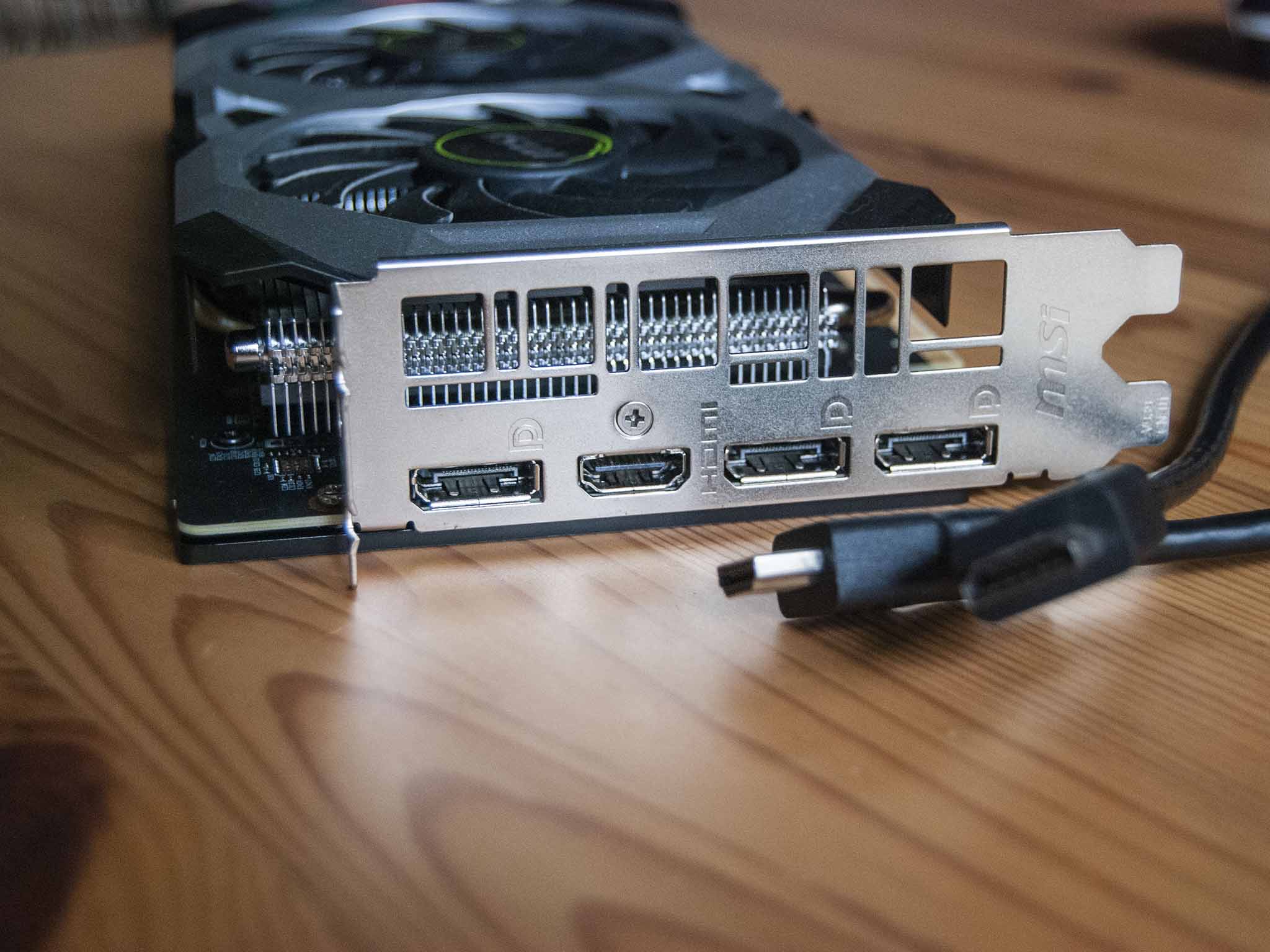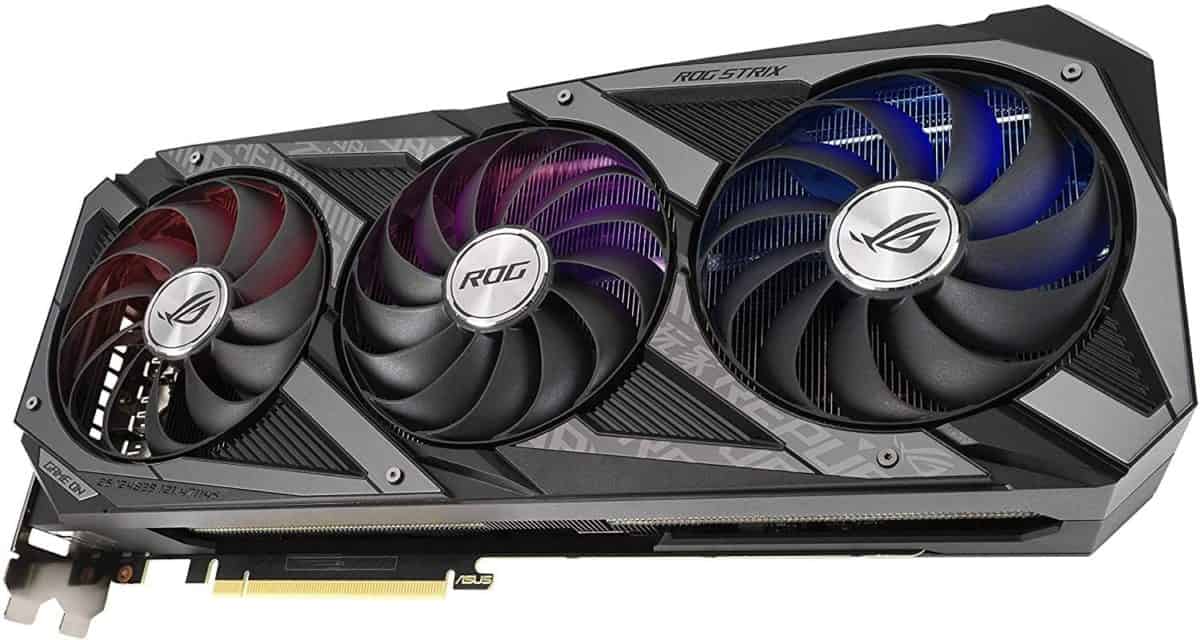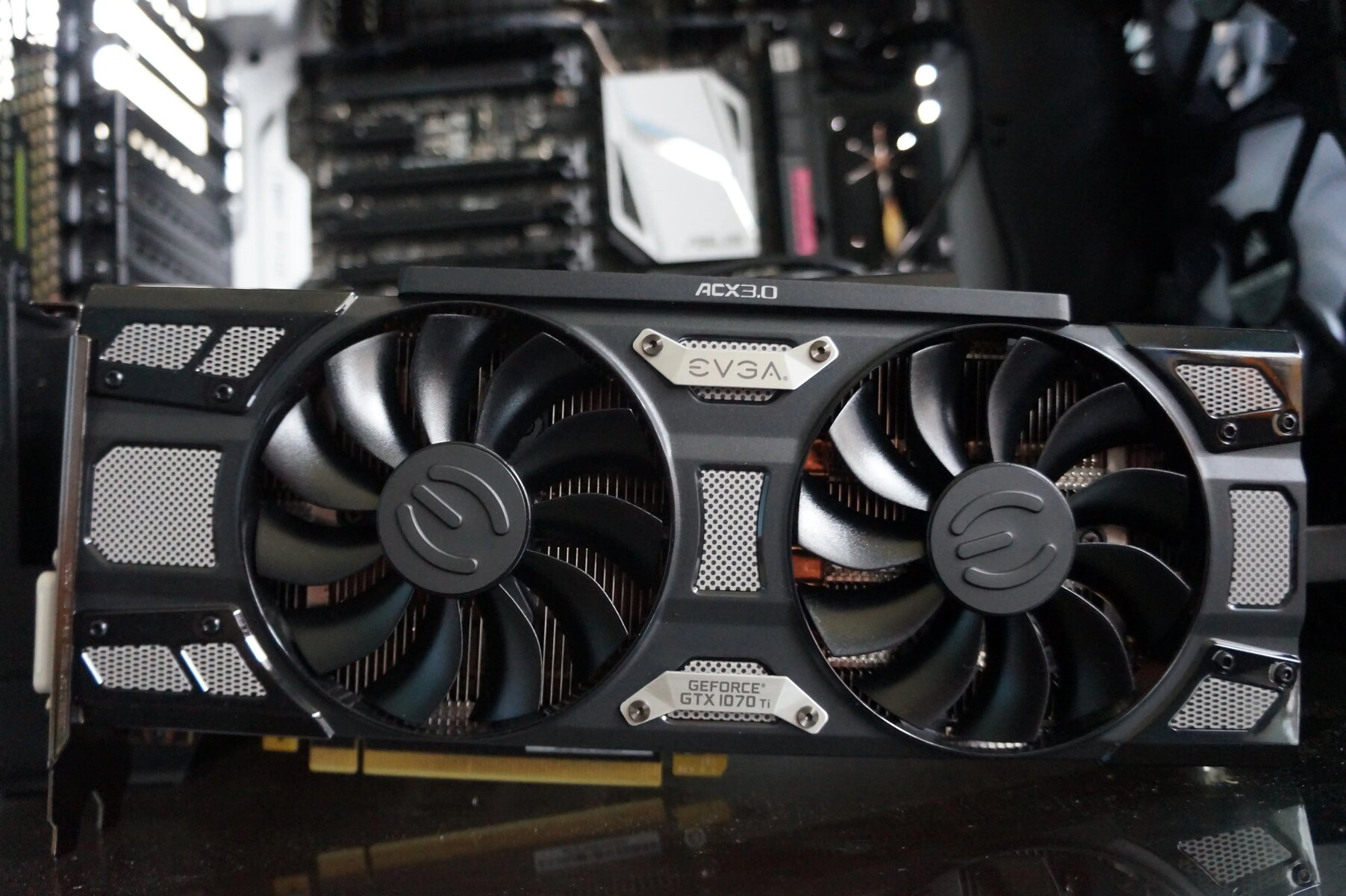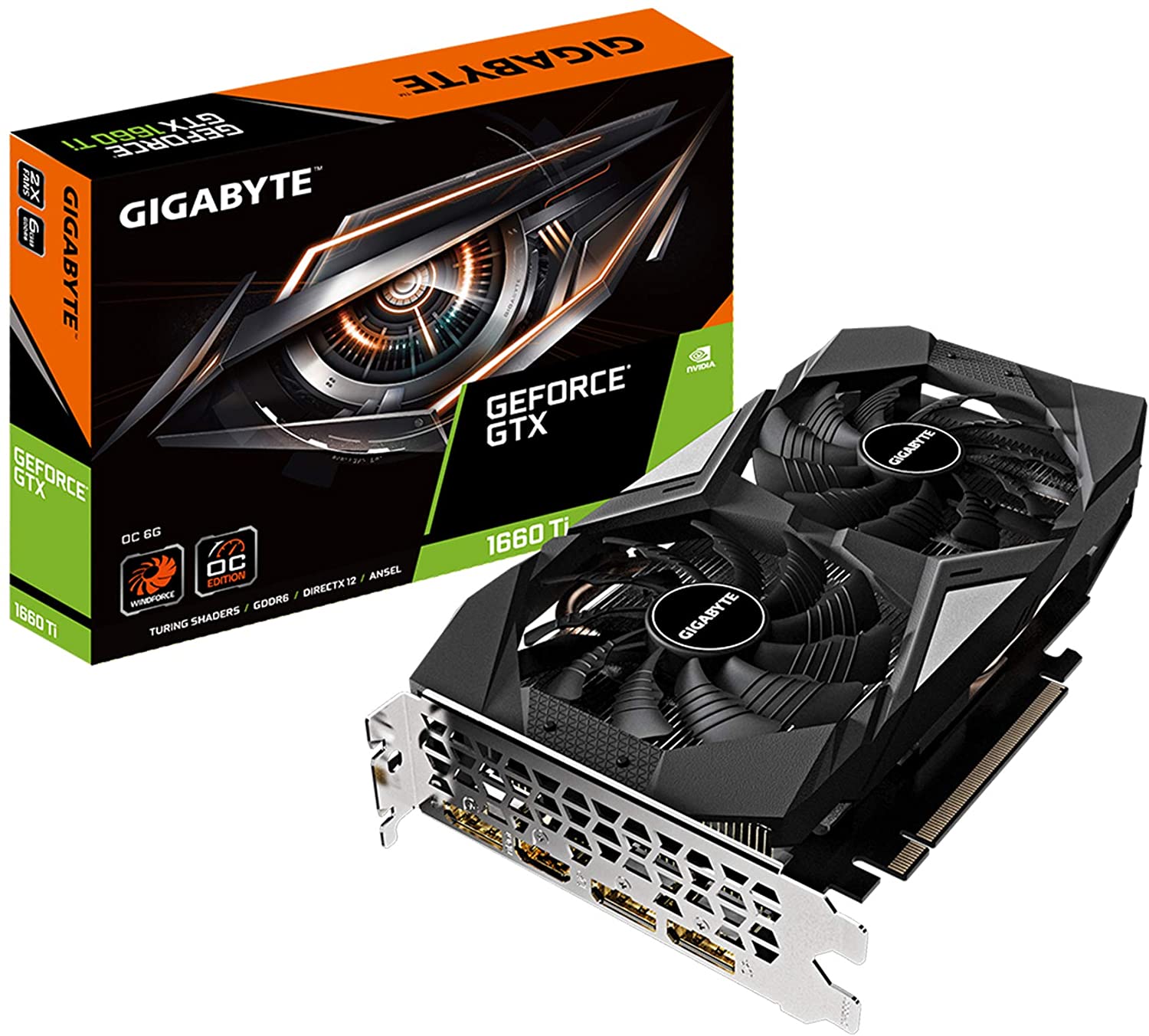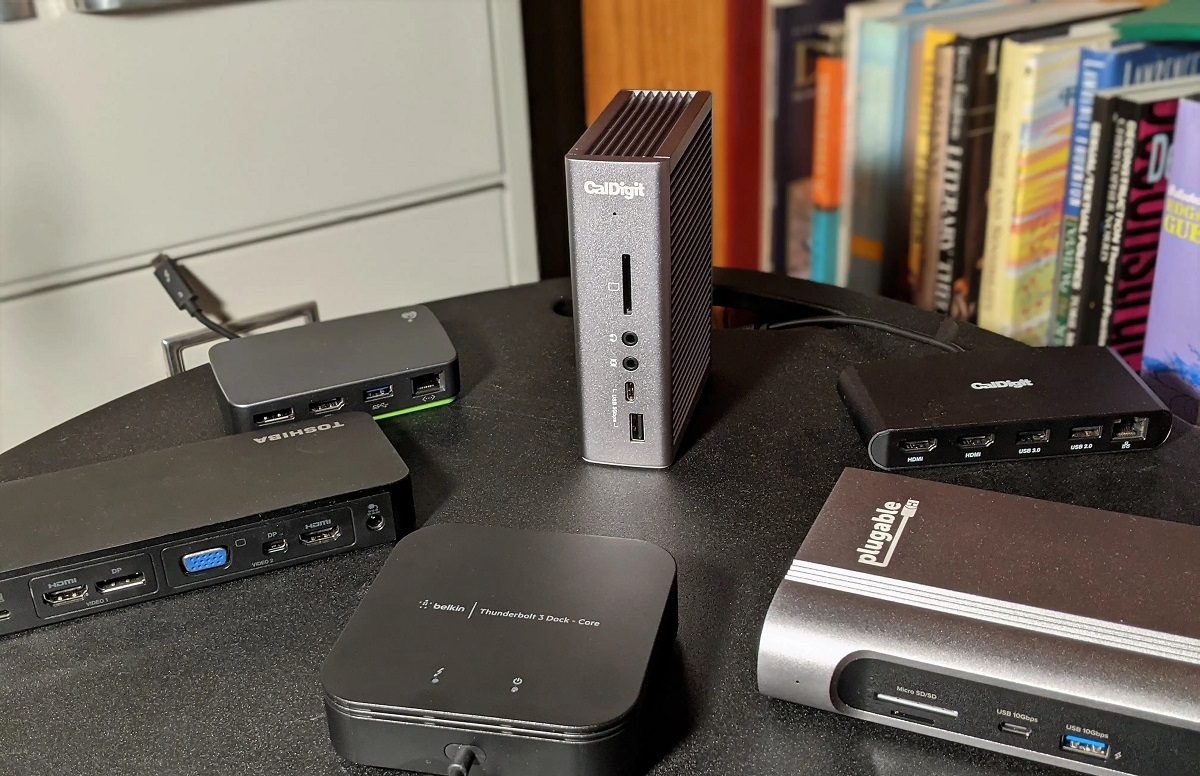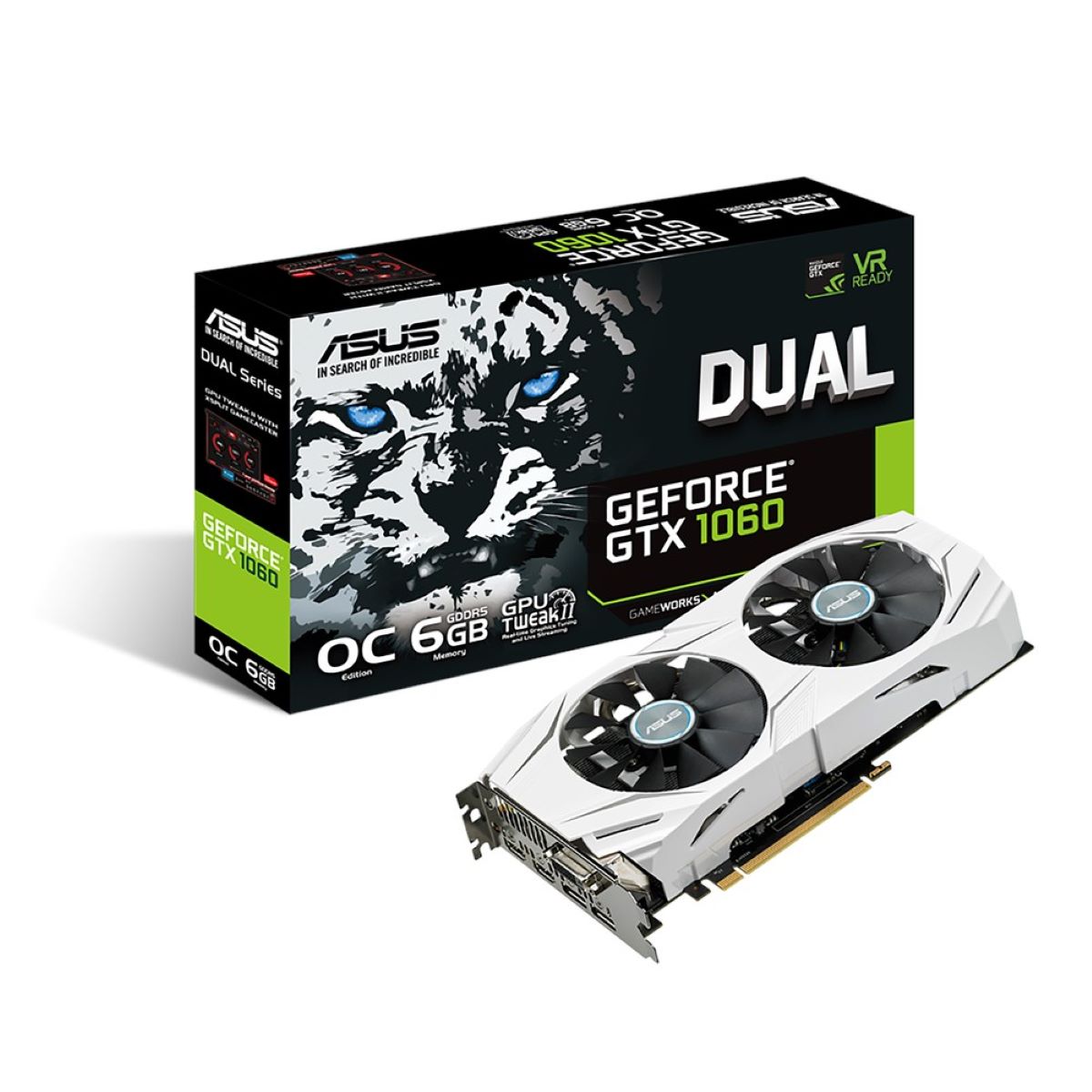Introduction
Welcome to the world of graphics cards and their fascinating features! If you’re someone who loves gaming or working with high-resolution displays, then you must have come across HDMI ports on graphics cards. HDMI (High-Definition Multimedia Interface) ports serve as the primary way to connect your graphics card to a monitor or TV and enjoy crisp, high-quality visuals.
In this article, we will delve into the importance of having multiple HDMI ports on a graphics card and how they can enhance your overall experience. We will explore the benefits, misconceptions, and factors to consider when choosing a graphics card based on its HDMI port capabilities.
Having more HDMI ports on your graphics card can offer numerous advantages, such as increased connectivity options and the ability to connect multiple displays simultaneously. Moreover, understanding the different types of HDMI ports and their capabilities will help you make an informed decision when purchasing a graphics card.
So, whether you’re a gaming enthusiast, a content creator, or someone who requires a multi-display setup for work, read on as we unravel the world of HDMI ports on graphics cards and discover how they can elevate your viewing and computing experience.
Benefits of having multiple HDMI ports on a graphics card
Having multiple HDMI ports on a graphics card can bring a range of benefits, especially for those who require versatile connectivity options. Let’s take a closer look at some advantages of having multiple HDMI ports:
- Multi-display support: One of the significant benefits of multiple HDMI ports is the ability to connect multiple displays simultaneously. Whether you’re a gamer, multimedia professional, or simply someone who enjoys a multi-monitor setup, having multiple HDMI ports allows you to extend your desktop and create an immersive viewing experience.
- Flexible display configurations: With multiple HDMI ports, you have the flexibility to choose different display configurations based on your needs. You can connect a primary display to one HDMI port and use the other ports for secondary displays, allowing you to multitask efficiently or enjoy panoramic gameplay across multiple screens.
- Convenience: Having multiple HDMI ports eliminates the need for adapters or converters, as HDMI is a commonly used interface for modern monitors and TVs. This convenience allows for a hassle-free setup, saving you time and effort when connecting your graphics card to various displays.
- Compatibility and future-proofing: Multiple HDMI ports on a graphics card ensure compatibility with different monitors, as HDMI is widely supported by most modern display devices. Additionally, as technology advances and new display standards emerge, having multiple HDMI ports ensures that your graphics card is future-proofed and can support the latest connectivity options.
- Streaming and content creation: If you’re a content creator or streamer, multiple HDMI ports on your graphics card provide opportunities for seamless streaming and capture setups. You can connect one HDMI port to your main display and use the additional ports to connect capture cards, video mixers, or external devices, allowing for smooth and professional-grade content production.
These are just a few of the benefits that come with having multiple HDMI ports on a graphics card. Whether you’re looking to enhance your gaming experience, improve productivity with a dual-monitor setup, or delve into content creation, multiple HDMI ports offer the flexibility and connectivity options you need.
Understanding HDMI ports on a graphics card
HDMI ports play a crucial role in connecting your graphics card to external displays such as monitors, TVs, or projectors. To better understand HDMI ports, let’s dive into their key aspects:
1. Purpose: HDMI ports serve as the primary interface for transmitting audio and video signals from your graphics card to a display. They have become the standard for high-definition multimedia connections due to their ability to carry both audio and video data through a single cable.
2. Types: There are different types of HDMI ports, such as HDMI 1.4, HDMI 2.0, and HDMI 2.1, each offering varying capabilities. HDMI 1.4 supports a maximum resolution of 1080p and basic 3D capabilities, while HDMI 2.0 supports up to 4K resolution at 60Hz and HDR (High Dynamic Range) content. The latest standard, HDMI 2.1, supports resolutions up to 10K, higher refresh rates, and advanced features like Variable Refresh Rate (VRR) and Auto Low Latency Mode (ALLM).
3. Bandwidth: HDMI ports also vary in terms of their bandwidth capabilities. Higher bandwidth allows for faster transmission of data, which is essential for supporting higher resolutions and refresh rates. When choosing a graphics card, consider the HDMI port’s bandwidth to ensure it meets your display requirements.
4. Connecting multiple displays: Graphics cards with multiple HDMI ports offer the advantage of connecting multiple displays simultaneously. This feature is beneficial for gamers, professionals working with multiple monitors, or those who want an immersive viewing experience across several screens.
5. Audio support: HDMI ports support audio signals as well. They can transmit high-quality digital audio formats, such as Dolby TrueHD and DTS-HD Master Audio, alongside the video signal. This eliminates the need for separate audio connections, simplifying your setup.
6. HDCP compatibility: HDMI ports also support HDCP (High-bandwidth Digital Content Protection) protocol. This ensures that if you’re using protected content, the signal remains secured and prevents unauthorized copying or distribution.
Understanding these aspects of HDMI ports will help you make informed decisions when selecting a graphics card with the desired HDMI specifications. Whether you’re a gamer seeking high-resolution gaming experiences or a professional working with multiple displays, having a clear understanding of HDMI ports is vital in maximizing your graphics card’s capabilities.
How to find out how many HDMI ports a graphics card has
When shopping for a graphics card, it’s important to determine how many HDMI ports it has to ensure compatibility with your display setup. Here are a few methods to find out the number of HDMI ports on a graphics card:
1. Manufacturer’s website or product specifications: The easiest way to find out the number of HDMI ports on a graphics card is to visit the manufacturer’s website or check the product specifications. The manufacturer typically provides detailed information about the graphics card’s connectivity options, including the number and type of HDMI ports.
2. Retailer websites or online marketplaces: Retailer websites or online marketplaces often provide comprehensive product descriptions, which include the number of HDMI ports on a graphics card. It’s a good practice to read through the product details or specifications provided by the seller before making a purchase.
3. Graphics card’s box or packaging: If you have the physical copy of the graphics card or the box it came in, the number of HDMI ports is usually displayed prominently on the packaging. Look for labels or images on the box that indicate the presence of HDMI ports.
4. User manuals or documentation: If you already own the graphics card and are unsure of the number of HDMI ports, refer to the user manual or documentation that came with the product. The user manual often provides a detailed guide on the graphics card’s features, including the number and location of HDMI ports.
5. Third-party review websites or forums: If you’re unable to find the required information from official sources, you can turn to third-party review websites or forums. These platforms often feature comprehensive reviews or user discussions where you may find details about the HDMI ports on specific graphics cards.
By using these methods, you can easily discover the number of HDMI ports on a graphics card. It’s crucial to identify the HDMI port count beforehand to ensure that it aligns with your display requirements, whether you’re looking to connect a single monitor or multiple displays.
Common misconceptions about HDMI ports on graphics cards
When it comes to HDMI ports on graphics cards, there are several common misconceptions that can lead to confusion. Let’s debunk some of these misconceptions:
1. More HDMI ports mean better performance: One misconception is that having more HDMI ports on a graphics card will result in better performance. However, the number of HDMI ports has no direct impact on the performance of the graphics card. The primary role of HDMI ports is to enable connectivity with displays, and the performance of the graphics card depends on other factors such as the GPU architecture, memory, and clock speeds.
2. HDMI ports limit display resolution and refresh rates: Another misconception is that HDMI ports have limitations when it comes to display resolution and refresh rates. While earlier HDMI versions had limitations, the latest HDMI standards, such as HDMI 2.1, support high resolutions up to 10K and higher refresh rates. It’s essential to check the HDMI version and the graphics card’s specifications to ensure compatibility with your desired display resolution and refresh rate.
3. All HDMI ports on a graphics card have identical capabilities: Some people assume that all HDMI ports on a graphics card have the same capabilities. However, this is not always the case. Some graphics cards may feature a mix of HDMI versions, with specific ports supporting higher resolutions or additional features like HDR or variable refresh rates. It’s crucial to consult the graphics card’s specifications to understand the capabilities of each HDMI port.
4. HDMI ports are only for video: While HDMI ports are primarily used for transmitting video signals, they also support audio signals. HDMI ports can carry high-quality digital audio formats, eliminating the need for separate audio connections. This allows for a streamlined and clutter-free setup when connecting your graphics card to a display.
5. Adapters can convert HDMI ports to other types of ports: There is a misconception that adapters can convert HDMI ports to other types of ports, such as DisplayPort or DVI. While there are adapters available for converting HDMI to other ports, it’s important to note that the conversion may not always provide the same level of functionality and features. Additionally, adapters may have limitations in terms of supported resolutions or refresh rates. It’s best to use the native port type that matches your display’s input.
By dispelling these misconceptions, you can gain a better understanding of HDMI ports on graphics cards and make informed decisions when it comes to choosing the right graphics card and connecting it to your displays. Remember to consult official specifications and do thorough research to ensure that your graphics card meets your specific requirements.
Factors to consider when choosing a graphics card based on HDMI ports
When selecting a graphics card, it’s important to consider several factors related to HDMI ports to ensure compatibility and optimal performance. Here are some key factors to keep in mind:
1. HDMI version: Check the HDMI version supported by both the graphics card and your display. Ensure that the HDMI version on the graphics card is compatible with your desired display resolution, refresh rate, and any additional features you may require, such as HDR or variable refresh rates. Choosing a graphics card with a higher HDMI version can future-proof your setup and provide support for advanced display technologies.
2. Number of HDMI ports: Assess your display setup requirements and determine how many HDMI ports you need on your graphics card. If you plan to connect multiple displays or devices simultaneously, ensure that the graphics card offers the necessary number of HDMI ports to accommodate your setup. Consider future expansion needs as well.
3. Maximum supported resolution: If you’re working or gaming at higher resolutions, ensure that the graphics card’s HDMI ports can support the desired resolution. HDMI 2.0 and above typically offer support for 4K and even higher resolutions. Match the graphics card’s maximum supported resolution with the capabilities of your display for a seamless and immersive visual experience.
4. Refresh rate support: Consider the refresh rate capabilities of both the graphics card and your display. HDMI 2.0 and HDMI 2.1 can support higher refresh rates, such as 120Hz or even 144Hz, which are ideal for gaming. Ensure that the graphics card’s HDMI ports can deliver the desired refresh rate for smooth and fluid gameplay or display performance.
5. Additional features: Some HDMI ports on graphics cards may offer additional features like HDCP support, HDR compatibility, or the ability to transmit audio formats such as Dolby TrueHD or DTS-HD Master Audio. Evaluate whether these additional features are essential for your specific requirements and choose a graphics card that provides the necessary HDMI port capabilities.
6. Port types: Determine the compatibility of the graphics card’s HDMI ports with your display’s input. While HDMI is widely supported, some displays may have other port types like DisplayPort or DVI. Ensure that you have the necessary cables or adapters to connect your display to the graphics card’s HDMI ports or opt for a graphics card with the desired port types.
Considering these factors will help you make an informed decision when choosing a graphics card based on its HDMI port capabilities. Assessing your specific requirements, display setup, and future needs will ensure that you select a graphics card that seamlessly connects to your displays and provides an optimal visual experience.
Conclusion
Understanding HDMI ports on graphics cards is essential for anyone looking to connect their display devices and maximize their visual experience. Multiple HDMI ports offer the flexibility to connect multiple displays, create versatile display configurations, and simplify setup processes.
In this article, we explored the benefits of having multiple HDMI ports on a graphics card, such as multi-display support, flexible display configurations, and convenience. We also debunked common misconceptions surrounding HDMI ports, emphasizing that HDMI ports do not directly impact the performance of the graphics card and that HDMI technology has evolved to support high resolutions and refresh rates.
When choosing a graphics card based on HDMI ports, it’s important to consider factors such as HDMI version compatibility, the number of HDMI ports required for your display setup, the maximum supported resolution and refresh rate, and any additional features you may need such as HDR support or audio transmission capabilities.
By carefully considering these factors and conducting thorough research, you can select a graphics card that seamlessly connects your displays and provides an optimal visual experience in gaming, content creation, or general computing.
So, whether you’re a gaming enthusiast, a professional working with multiple monitors, or someone who enjoys high-quality audio and video streaming, remember to keep HDMI ports in mind when choosing a graphics card. Connect, immerse, and enjoy a world of crystal-clear visuals and immersive audio with the right graphics card and its HDMI port capabilities.







